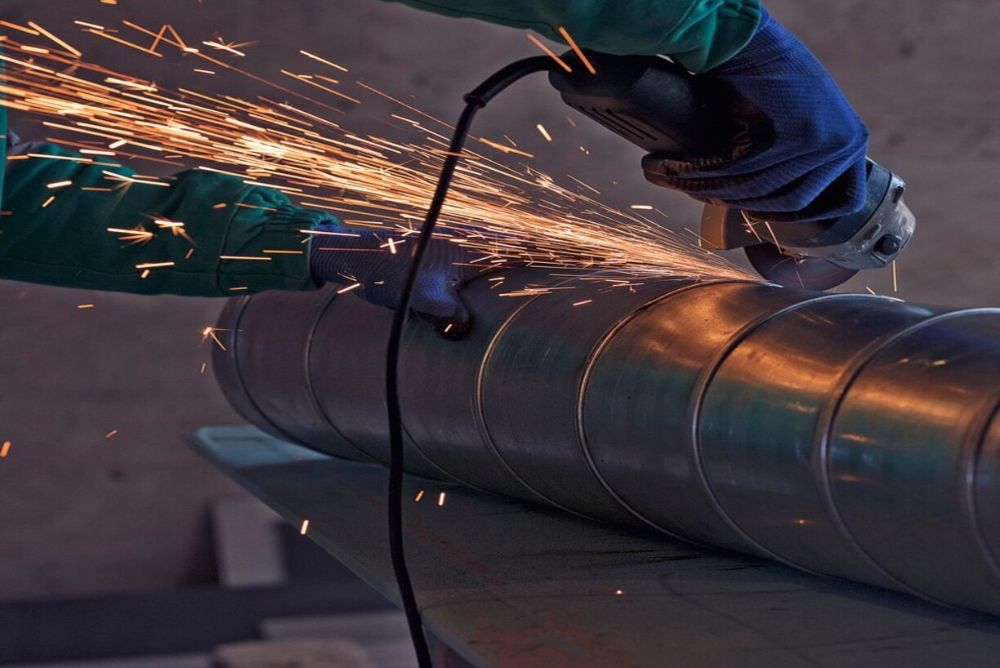Argon Welding Technologies in Aerospace and Defense Industry
- Blog
- Argon Welding Technologies in Aerospace and Defense Industry
Argon Welding Technologies in Aerospace and Defense Industry
Contents
- Argon Welding Technology and Its Place in the Aviation-Defense Industry
- Advantages of Argon Welding in the Aviation and Defense Industry
- Production of Durable and Light Parts with Argon Welding
- Argon Welding Applications in Aviation and Defense Industry
- Performance of Parts Produced with Argon Welding
- The Future of Argon Welding Technology and Innovation
- Safety and Durability Provided by Argon Welding
Argon Welding Technology and Its Place in the Aviation-Defense Industry
SS Project, in the aviation and defense industry argon welding technology using security ve durability offers high-level solutions. This technology high precision by increasing the quality of parts that require to critical production processes contributes. Argon welding is a frequently preferred technology for welding processes in the industrial world. This technology is of great importance, especially in sectors that require high precision and durability. The aviation and defense industry is one of the sectors that benefit most from the advantages provided by argon welding. Argon gas prevents the oxidation of the metal during welding, Welding seams are stronger and more durable makes it happen. Processes performed with argon welding minimize the risk of deformation by enabling metals to fuse at lower temperatures. This feature is a very important factor in the aviation and defense industry, because products such as aircraft, helicopters, missiles and armored vehicles high security and durability requirements There is.
In the aviation industry, aircraft such as planes and helicopters are high temperature, pressure and harsh weather conditions is exposed. Therefore, the resources of the materials used must be very strong and durable. The superior quality connections offered by argon welding make these tools longevity allows it to happen. In the defense industry, similar safety and durability criteria apply for the production of military vehicles, weapons and other sensitive equipment. Argon welding strengthens the components of these vehicles while also maximizing safety. Thanks to technological developments, the application areas of argon welding are expanding day by day.

Advantages of Argon Welding in the Aviation and Defense Industry
One of the main advantages of argon welding in the aerospace and defense industry is that it increases the suitability of the metal for welding. argon, one inert gas As such, it protects the atmosphere surrounding the source and prevents the oxidation of metals. SS Proje uses argon welding technique in the aviation and defense industry and contributes to projects in this field. high performance and reliable parts It brings profit. This technique high strength and low weight plays an important role in meeting the needs. This is especially titanium and aluminum It is very important for materials frequently used in aircraft such as The oxygen protection provided by argon gas ensures that the welding process is more efficient and the quality of weld seams increases. Argon welding operates at lower temperatures than traditional welding methods. This prevents the metal from heating and deformation and ensures excellent results in projects that require more precise workmanship.
Another advantage is that the argon source is more aesthetic and smooth welding seams is to create. In the aviation industry, aesthetics are as important as functionality. Proper welding seams on the fuselages of aircraft and helicopters, aerodynamic performance It has a great impact on. In addition to the welding seams being smooth and aesthetic, these seams will be stronger and more durable. This is also flight safety It ensures that critical parts operate at high performance. At the same time, welds made thanks to argon welding become resistant to rust and serve as a protective shield for a long time. These advantages play an important role, especially in aerospace and defense vehicles exposed to outdoor conditions.
Production of Durable and Light Parts with Argon Welding
In the aviation and defense industry, lightness and durability The balance between them is very important. Planes, helicopters and other aircraft in particular must try to be built with the lightest materials possible, while at the same time maintaining their durability. Argon welding is an important technology that provides this balance. light metals, titanium, aluminum and magnesium Materials such as are known for their low weight combined with high durability. While argon welding performs the welding processes of these metals efficiently, mechanical properties It also heals. The durability of welded parts is strengthened under both static and dynamic loads, which increases flight safety.
SS Project produces durable and lightweight parts using argon welding technology for the aviation and defense industry. These parts flight safety and efficiency of systems and raises the quality standards in the sector. The precision provided by argon welding in welding these metals allows the weight of the parts to be reduced. In the aviation and defense industry, every gram counts. The use of lightweight parts saves fuel and also increases aerodynamic efficiency. At the same time, these lightweight and durable pieces can be designed to withstand all weather conditions. Argon welding enables the safe and durable production of these types of parts and allows the parts to have a long life. This increases operational efficiency while minimizing the need for maintenance of aircraft, helicopters and other vehicles.
Argon Welding Applications in Aviation and Defense Industry
Argon welding in the aerospace and defense industry has a wide variety of application areas. SS Project, in the aviation and defense industry critical parts It uses argon welding technology for its production. This technology is especially important for aircraft and defense systems. durable and high performance It is preferred in the production of its components. Many different components, from the aircraft body to engine parts, from landing gear to fuel systems, are produced by argon welding. During the production of these parts, high quality welding is extremely important for both safety and performance. Especially the fuselage of aircraft, Very resistant to external influences should be. While argon welding provides high strength and long life in such critical parts, it also makes it possible to achieve excellent aesthetic results.
In the defense industry, argon welding plays an important role in the production of military vehicles, armored carriers, rockets and missile systems. Since these vehicles are used extensively on the battlefield, the parts must be durable and reliable. is vital. Argon welding provides high strength in the welding of such parts and prevents possible malfunctions. The low-temperature process provided by argon welding ensures that the parts become less heated and deformed, making the production process more efficient. In the defense industry, fast production and high quality is very important and argon welding is the ideal solution to meet these needs.
Performance of Parts Produced with Argon Welding
Provided by argon source high performanceis an important advantage, especially in the aerospace and defense industry. Argon gas used during welding prevents the metal from oxidizing and ensures that the weld seams are strong and durable. This includes aircraft engines, landing gear and armored vehicles. parts requiring high security It is a critical factor in production. Thanks to argon welding, the welds become resistant to high pressure and heat. This feature is one of the most important performance criteria in the aviation and defense industry.
The aesthetically smooth and clean welding seams made with argon welding increases the durability of the parts. A well-made weld seam causes less fatigue of the metal and to last longer It allows. This allows aircraft and military vehicles to operate safely for longer. The advantage of working with low temperatures provided by argon welding makes it possible to weld without damaging the internal structure of metals. This strengthens the mechanical properties of the parts and minimizes safety risks. The parts produced by SS Project with argon welding are used in the aerospace and defense industry. security and performance provides excellent results. The parts produced are designed to withstand extreme conditions and meet high standards in terms of safety.
The Future of Argon Welding Technology and Innovation
The future of argon welding technology has an important place in industrial fields. New developments make this technology even more to become efficient will provide. In the future, faster and more precise welding machines will improve the quality of argon welding and speed up production processes. SS Project is constantly talking about the future of argon welding technology. innovation By doing so, it contributes to more efficient and safe production processes in the aerospace and defense industry. This technology is constantly evolving to meet evolving needs in the industry. Innovations in argon welding technology will be used especially in welding more complex and smaller parts. This is especially true for parts in the aerospace and defense industry. light and durable will allow it to happen. Environmentally friendly properties of argon welding, sustainable production processes will make it a part of it.
Safety and Durability Provided by Argon Welding
Argon welding in the aviation and defense industry security needs It is the ideal solution to meet This technology ensures that the welded parts are of high strength and durability, minimizing the risk of any failure. Argon welding provides safety-critical parts such as airplanes, helicopters and armored vehicles. superior durabilityProvides long-term security. Especially in the defense industry, this durability increases the effectiveness of vital vehicles and systems. SS Project uses argon welding in the aerospace and defense industry in production processes. high security and durability provides. This allows for increased safety standards, especially in critical areas such as air transport vehicles and military systems.


